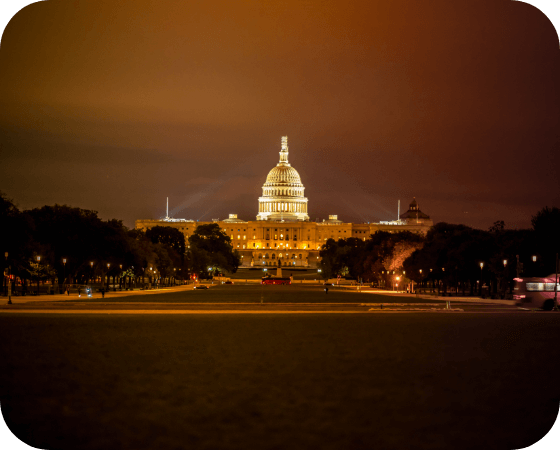House and Senate appropriators are poised to introduce their Fiscal Year (FY) 2023 spending bills, kicking off weeks and months of negotiations and hearings. The FY 2023 appropriations cycle notably follows a lengthy FY 2022 cycle that wasn’t resolved until March 2022. As lawmakers grapple with the midterm elections, retirements, and economic concerns in the coming months, how likely will the new appropriations cycle spill over into the next calendar year?
What We Currently Know
So far, top congressional appropriators are saying they want FY 2023 appropriations to wrap up in the current calendar year. In a March 31 hearing, House Appropriations Committee Chairwoman Rosa DeLauro (D-CT) expressed a desire to pass all appropriations bills “on time” so they can be signed into law by September 30, 2022. But her Republican counterpart, Ranking Member Tom Cole (R-OK), had a more sobering take, saying Congress is unlikely to finish its work on FY 2023 appropriations until the end of the current calendar year.
There are only a handful of other indications as to how the FY 2023 appropriations cycle will pan out. On April 28, Democratic and Republican leaders of the House and Senate Appropriations committees met to discuss topline spending levels for FY 2023. While it remains to be seen what came out of the meeting, the dollar figures each side offers will indicate how contentious appropriations negotiations might shape out to be this summer. For instance, the administration proposed a $1.6 trillion budget for FY 2023, with funding allocations roughly equally divided between defense and non-defense spending. If Democrats start their negotiations with the president’s budget request, their push is likely to fall flat, as Republicans and some centrist Democrats have been eager for more defense spending.
There aren’t many more details about timelines, either. In the House, the Appropriations subcommittees are reportedly expected to markup their 12 spending bills between June 13 and June 22, with the full committee to follow its markups from June 22 through June 30. However, all dates are currently tentative, and the committee won’t confirm official dates until a final notice is sent out.
The Senate Appropriations Committee has yet to announce its own tentative timeline, although Senate appropriations hearings always follow appropriations hearings in the House. This means subcommittee and full committee markups in the Senate will probably be scheduled throughout July and August.
Which Factors Will Impact FY 2023 Appropriations?
Unfortunately for lawmakers, they’re heading into a new appropriations cycle with many distractions and extenuating circumstances that don’t often come together all at once. Here are some key factors that will determine whether lawmakers will wrap up the new appropriations cycle before 2022 ends
The Midterm Elections
A “wave” election that could likely see control of the House shift from one party to another is typically a strong indicator of a long appropriations season. Due to both historical trends and President Joe Biden’s low approval ratings, Republicans are generally favored to regain a majority in the House in the 2022 midterm election this November. The closest comparison to the 2022 election so far is 2010, when low approval ratings over the Obama administration’s handling of the economy helped flip 63 House seats to the GOP, causing the Democrats to lose control of the chamber. As a result, Congress didn’t finalize FY 2011 spending bills until March 2011. 2018 saw another wave election, with then-President Donald Trump’s unpopularity supercharging Democratic turnout to help the party flip 41 seats, allowing Democrats to retake the House. If 2010 and 2018 are any indication, a long FY 2023 appropriations season is likely to coincide with the 2022 midterm elections.
Retirements of Top Appropriators
Some of the current lawmakers who won’t be on the ballot for the 2022 midterm elections include Senate Appropriations Committee Chairman Patrick Leahy (D-VT) and Ranking Member Richard Shelby (R-AL), who will both be retiring at the end of the 117th Congress. Their pending retirements might incentivize both to reach deals on spending bills sooner rather than later. Additionally, Sen. Susan Collins (R-ME), who is widely favored to replace Shelby as the Appropriation Committee’s top Republican, has indicated she’d prefer finishing FY 2023 appropriations in 2022 to ensure she can start the new Congress “with a clean slate.”
Inflation
Inflation is at a 40-year high, which could spur lawmakers to reach a final agreement on FY 2023 sooner instead of relying on a series of continuing resolutions (CRs) into next year. When inflation is at a more typical level like 2% per year, federal agencies can generally make do under a CR and find money in their budgets to ensure there are no interruptions in services or operations. However, if inflation persists near its current level of 8.5% through September, agencies will have a difficult time operating under a CR as they struggle to accommodate rising prices with budgets frozen at FY 2022 levels.
With a mix of incentives for and against reaching a budget deal, it’s hard to say when a final FY 2023 spending agreement will be signed into law. However, election season is busy enough for lawmakers, and with a historic and contention midterm election season almost in full swing, there’s little likelihood Congress will reach an agreement on appropriations before Election Day on November 8.

